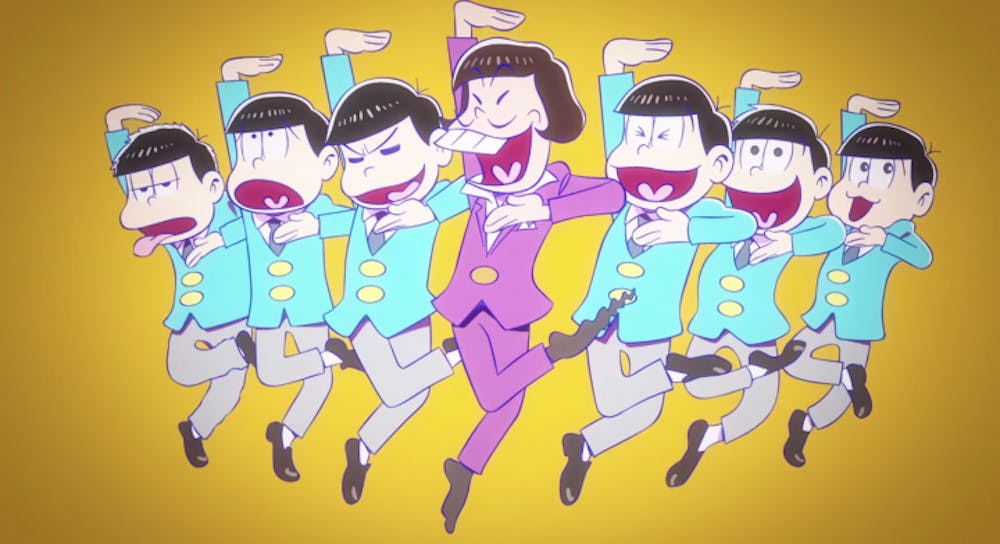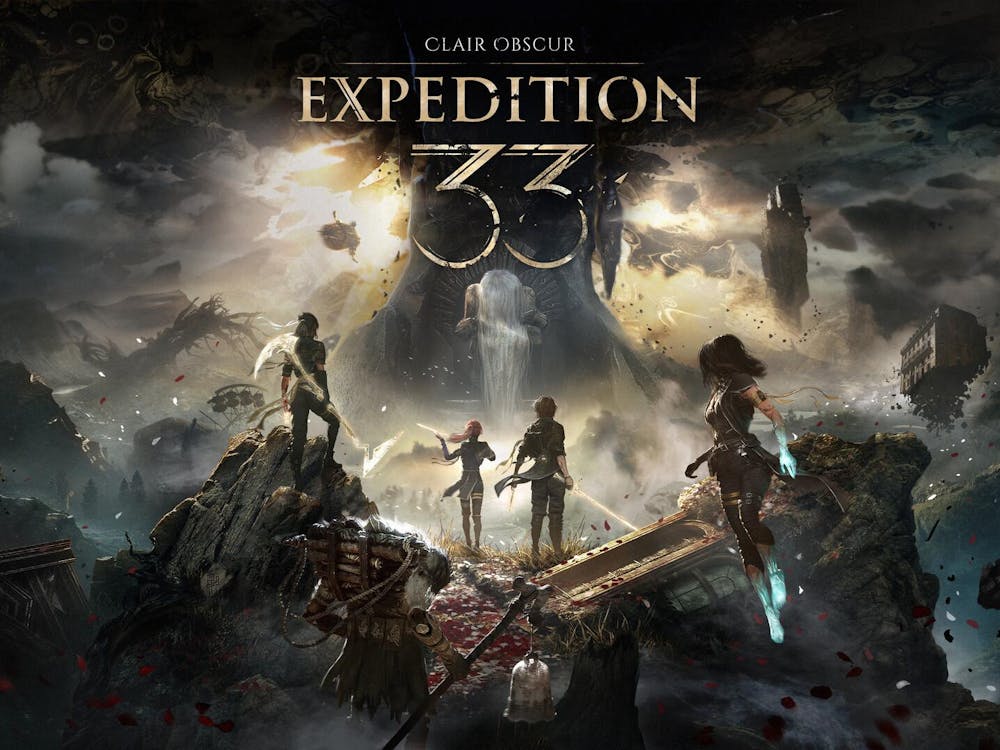The Osomatsu series is one of the most influential manga and anime series out there. Even John Lennon was doing its iconic Sheeh! Pose back in the 60s. Yet before fall 2015, if you had asked the average anime fans about it, they likely would have had no clue what you were talking about.
My Anime List
Enter Osomatsu-san, a continuation of Fujio Akatsuka’s original work. Despite its initial fears that the goofy humor the Showa-era Osomatsu-kun was known for, it blew up in popularity among anime fans. That was for good reason. Osomatsu-san is one of the funniest gag anime out there. With jokes that continuously hit home and absurd characters, Osomatsu-san is the perfect anime for the modern fan.
Six Terrible NEETs
The main characters in Osomatsu-san are the Matsuno brothers, Osomatsu, Karamatsu, Choromatsu, Ichimatsu, Jyushimatsu and Todomatsu. In the original Osomatsu-kun the sextuplets were mischievous but they weren’t bad. In Osomatsu-san, they’ve become horrible, lazy people. All six of the brothers became NEETs, or Not in Education, Employment or Training. They have no motivation to leave their parents' house or to get jobs, despite being somewhere in their early to mid-twenties. They’re terrible, but they’re not unlikable. Osomatsu-san found a healthy mix with the characters being terrible people and having some likeable qualities, though very few redeemable qualities.
Back 2 Gaming
Gags over characterization
Being a gag show, there is very little characterization of anyone. All of the characters stay pretty static with their initial introductions, but this never gets in the way of the show. Any actual attempts at lasting characterization would have felt out of place in Osomatsu-san.
There are a few episodes that bring short-term characterization to the Matsuno brothers – or other side characters like Iyami or Chibita, former protagonists of a previous Osomatsu anime – but most still end in some gag or another. Very few of the serious episodes were ever referenced again in the series either. The only ones that had not ended in some type of joke stuck out among the episodes that focused largely on humor. Jyushimatsu Falls in Love is a shining example of that, taking Jyushimatsu, who is primarily used for visual gags, and giving something more to him, showing that he’s not always the goofy, sports-loving guy that he is usually portrayed as. The episode was never mentioned again in the show, though. It would have been nice to see some references to the episode in the rest of the series to tie everything together.
Only a few episodes ever focus primarily on characterization. The vast majority are centered on the problems the brothers cause for each other or for other people. The more serious episodes are always good. Yet with the light-hearted, humorous tone that the rest of the series has, they can feel extremely out of place. The tone shifting is not a large problem but the contrast of the more serious episodes next to penis jokes is jarring. It’s hard to find a balance of serious and funny when there is no overarching plot to keep the show together. Having completely serious episodes mixed into comedy episodes with no references back to the serious causes some problems.
Referential Humor, Ahoy!
Many shows take an episode or two to build up to its peak. However, from its very first episode Osomatsu-san showcases many of its strongest points. In the style of the original, Showa-era Osomatsu-kun anime, the characters muse about how they can make a popular anime in 2015 as the humor climate has changed. They begin mashing together as many popular anime tropes as possible, starting with a reverse harem anime a la Uta no Prince-sama. It proved impossible to keep their Showa humor hidden. Before long, it started peeking through. In an attempt to hide who they really were, they threw in even more references to popular anime.
Planet Minecraft
Every single one of the jokes hit and the references are easy enough to follow for even a casual anime fan.
Osomatsu-san continues with the references through the rest of the series. There are frequent jokes that revolve around western media, such as the Saw franchise. Despite the many references, the show does not fail to stand on its own merits. It’s a well-known fact that too many references can date a show and make it less funny years or even months later. Osomatsu-san knows that and manages to avoid the problem with a balance of references. Most of its modern references are mostly kept to small things, like poses or small quotes, while the bulk of its references are on more timeless media.
Showa Roots
Osomatsu-san is never afraid to flaunt its Showa roots. Most Showa anime, anime from the Japanese Showa Period, are viewed primarily in nostalgia lenses nowadays. Very few have seen modern reboots.
Reddit R/Anime
Because of this, in its initial episode the characters fret over if they would even be popular in the modern era of anime. They worry that because they are from the 60s and have their over-the-top wacky humor, they wouldn’t make it in the modern era. Despite the original joke, the writers were never afraid to flaunt the roots of the show.
This works incredibly well for Osomatsu-san. It has an animation style that harkens back to the original series, that makes it stick out among current anime. Its style of humor makes it a show that can stand on a more worldwide stage. In many aspects, Osomatsu-san acts more like a western cartoon than many would think of a modern anime. This is all thanks to it sticking to its past with Osomatsu-kun. Osomatsu-san meshes the goofiness that many anime in the Showa-era were known for with modern anime sensibilities and humor. With the age of reboots that most media seems to be stuck in, it’s nice to see one that sticks to its roots in a way that never feels forced or unfunny.
TL;DR
It’s tough to take media that has long histories in pop culture and make it feel fresh without sacrificing what made it likable in the first place. If you look at almost any modern reboot, it’s easy to see that. Osomatsu-san manages to keep the original feel of the characters and setting while bringing it to a modern audience. The balance of references and its own original humor is a winning combination.
+Jokes constantly land
+The Matsuno brothers are bad people, but enjoyable characters
+Referential, but it never takes the show over
+Stays with its Showa roots
-Serious episodes sometimes feel out of place
Featured Image from: Tyler Regas










